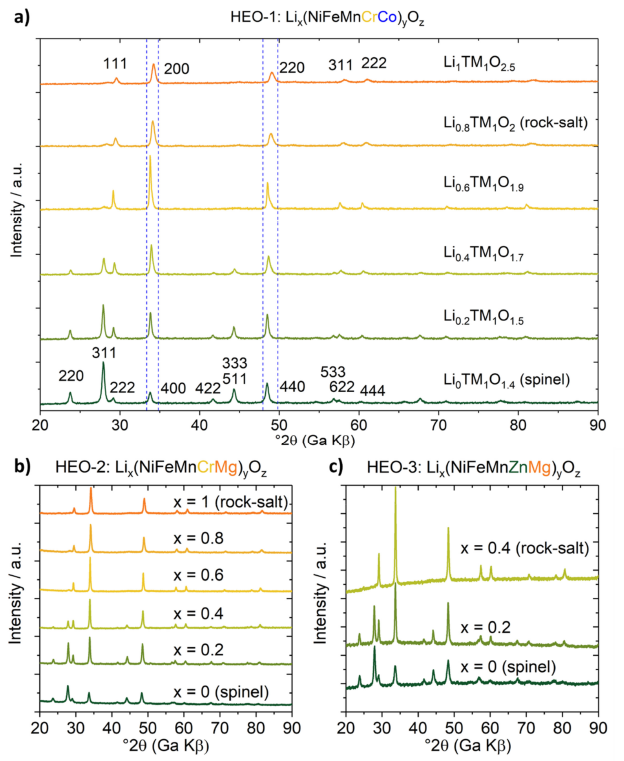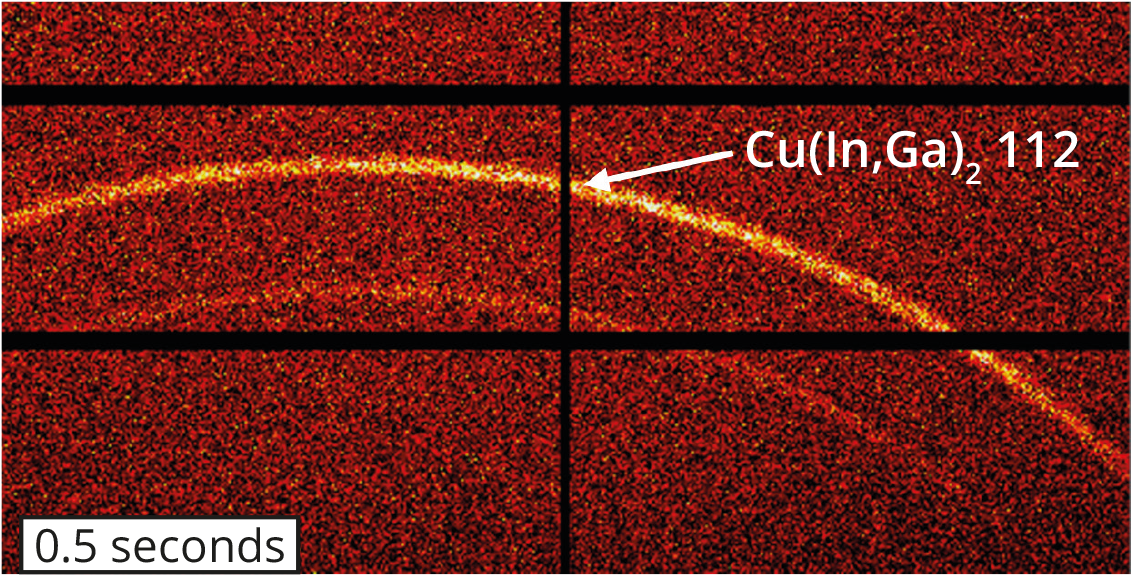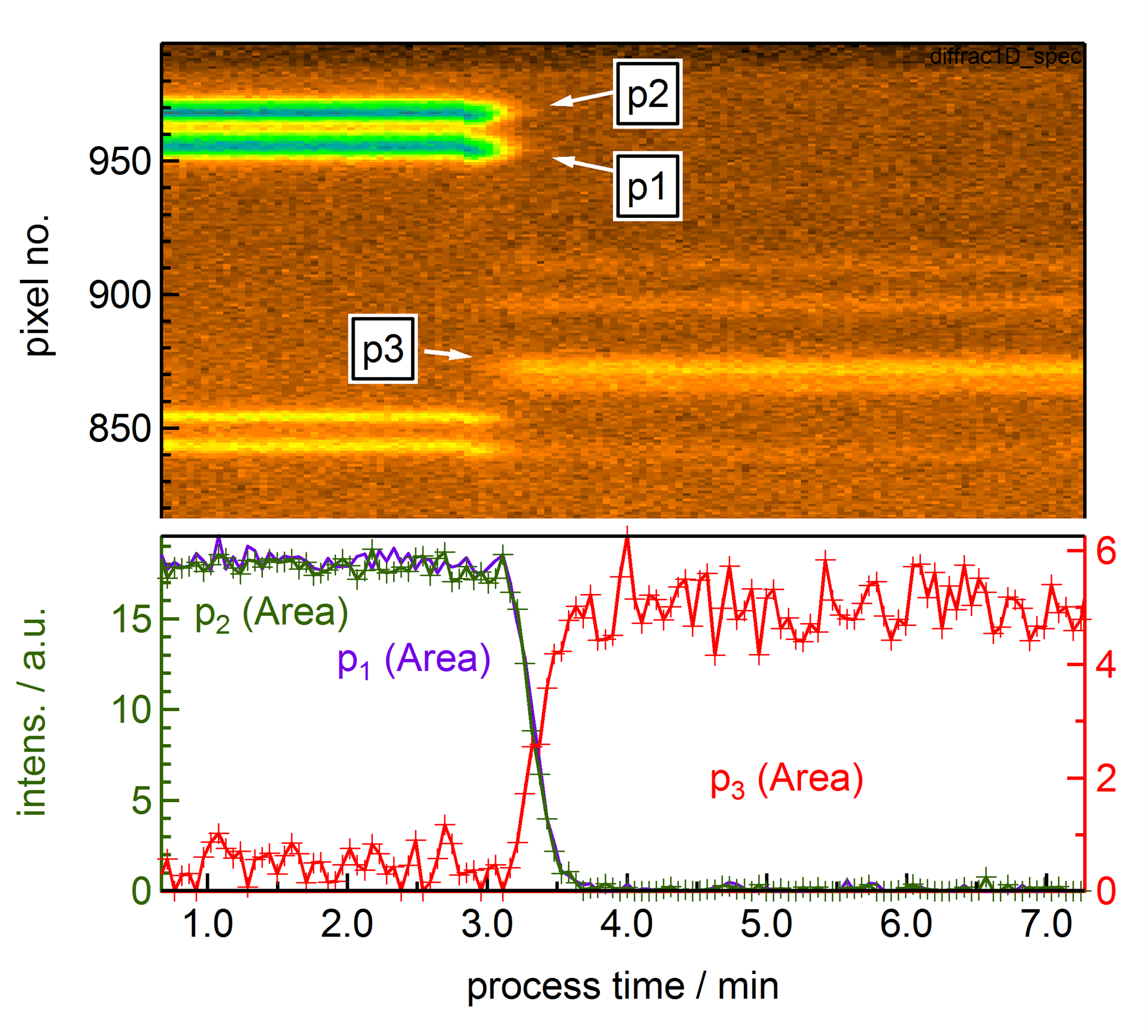Powder X-ray Diffraction (pXRD)

Application examples for Powder X-ray Diffraction (pXRD)
Challenging high entropy oxide samples
Researcher at Karlsruhe Institute of Technology utilized a STOE Stadi MP goniometer powered by a MetalJet D2+ to investigate challenging high entropy oxide (HEO) samples. The challenge was to measure a large number of samples and that for every type of sample only a small amount was available. By illuminating the powder samples with a focused bright and small beam of quasi monochromatic Gallium K β radiation, a good signal to noise ratio was obtained with an acceptable measurement time. Powder XRD data sets of a HEOs with varying composition are illustrated here.
For more details, please see the references:
Wang et.al.: Spinel to Rock-Salt Transformation in High Entropy oxides with Li Incorporation. Electrochem 2020, 1, 60–74;doi:10.3390/electrochem1010007
Wang et.al.: Multi-anionic and –cationic compounds: new high entropy materials for advanced Li-ion batteries. Energy Environ. Sci. 2019; doi: 10.1039/c9ee00368a
Real-time XRD in the lab
At the Helmholtz-Zentrum Berlin (HZB), a MetalJet source is used to investigate chemical and physical reactions during growth or decay of photovoltaic absorber films or in-operando studies of batteries by in-situ 2D-XRD. The setup fills a gap between synchrotron beamlines – with high photon flux, but low availability – and standard XRD – with high availability, but insufficient photon flux. Using weakly focusing optics, the time resolution can reach the sub-second regime – here shown with a measurement of a Cu(In,Ga)Se2 absorber film used for solar cells. The figure at the bottom shows the time evolution of a phase transition in a perovskite thin film.
For more information, please see the references:
M. Wansleben, C. Zech, C. Streeck, J. Weser, C. Genzel, B. Beckhoff and R. Mainz. Photon flux determination of a liquid-metal jet x-ray source by means of photon scattering. J. Anal. At. Spectrom. 34, 1497-1502 (2019), doi: 10.1039/C9JA00127A.
H. Näsström, P. Becker, J. Márquez, O. Shargaieva, R. Mainz, E. Unger and T. Unold. Dependence of Phase Transitions on Halide Ratio in Inorganic CsPb(BrxI1-x)3 Perovskite Thin Films Obtained from High-Throughput Experimentation. J. Mater. Chem. A (2020), doi: 10.1039/D0TA08067E.
Article: Solar cells: Mapping the landscape of Caesium based inorganic halide perovskites


